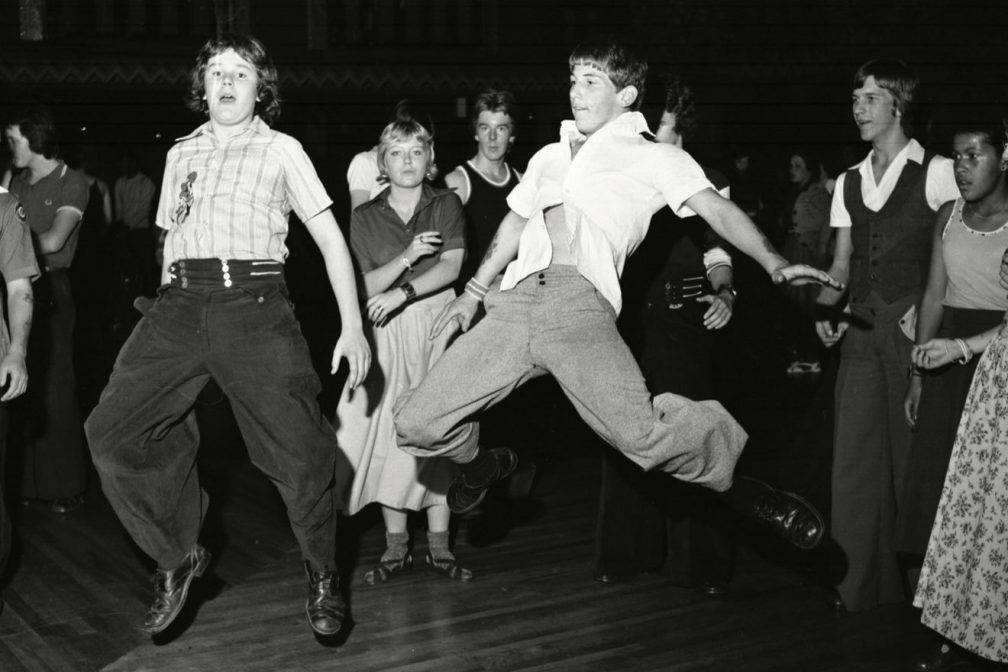
Northern Soul music is a uniquely British cultural movement that emerged in the late 1960s and flourished through the 1970s, defined by a passionate devotion to rare soul records and obscure American soul artists, exuberant all-night dancing, and a bold sense of Northern Soul fashion cherished to this day. The Northern Soul history and its legacy resonates across both music and fashion, with dedicated communities at Northern Soul nights UK and Northern Soul events still “keeping the faith.”
Northern Soul History: Origins and Scene Foundations
The Northern Soul music movement’s story begins with the UK’s Mod youth subculture and their love of African American R&B and rare soul records. By the late 1960s, the commercial influence of soul—especially Motown—had lessened, but in the North of England, a hunger for the “real” sound of 1960s American soul led young collectors and DJs to hunt for rare and upbeat tracks with strong backbeats and emotive vocals. These rare soul records, often released in limited numbers by small US labels, became coveted treasures on Northern Soul playlists.
The movement took its name from a music journalist’s observation of northern club DJs and patrons relentlessly pursuing obscure soul singles. It was not just about the music; it was a form of working-class escapism in an economically and socially constricted Britain. The scene thrived in the industrial North and Midlands, places like Manchester, Wigan, Blackpool, and Stoke-on-Trent.
Northern Soul Venues: Wigan Casino, Twisted Wheel and More
Several venues became legendary within the Northern Soul community:
- Twisted Wheel (Manchester): Considered the birthplace, the Twisted Wheel was where rare soul records first thundered across a British dancefloor.
- Wigan Casino (Wigan): The most famous of all, Wigan Casino’s all-nighters defined the era, attracting thousands from across the UK. Its closing in 1981 is often seen as the end of the classic era.
- Blackpool Mecca (Blackpool): Known for its Highland Room and all-dayers, it nurtured a slightly more progressive and contemporary soul playlist.
- The Golden Torch (Stoke-on-Trent): Another famed all-nighter venue, it contributed greatly to the dance and music culture of the scene.
These venues were not only dancehalls but social communities, birthing their own loyal followings, badges, and distinctive club identities. Original photos of these venues and their packed dance floors can be found through curated galleries—one major resource is the Soul Source gallery, which features classic images and event flyers.
The Sound and Its Stars
Although Motown influence was strong, the most prized tracks were by lesser-known American artists who never made it big at home. Among the most beloved songs and performers are:
- Frank Wilson – “Do I Love You (Indeed I Do)”
- Gloria Jones – “Tainted Love”
- Edwin Starr – “Time” and “Contact”
- Jimmy Radcliffe – “Long After Tonight Is All Over”
- Dean Parrish – “I’m On My Way”
- Tobi Legend – “Time Will Pass You By”
- The Four Seasons, Marvin Gaye, and Jackie Wilson also frequently graced club playlists, alongside many others.
Modern bands like The Signatures, a UK-based group, now tour with many of these original artists or play Northern Soul’s biggest hits to modern crowds, showing the enduring power of this music.
Some classic performances and documentaries on YouTube help recapture the spirit:
- Northern Soul Dancing Video (dance footage and history)
- Northern Soul at the Proms 2023 (a BBC Proms celebration)
Northern Soul Dance: Stomping and All-Nighters
Dancing was at the core of the culture—a style known as “stomping,” marked by spins, flips, drops, high kicks, and athletic moves, often inspired by stage antics of artists like Jackie Wilson. Dancers prided themselves on stamina through all-nighters, with talcum powder liberally dusted on the floor for the perfect glide.
Vivid photographic records of Northern Soul’s energetic dancing are found in the work of contemporary documentarians like Jeanie Jean and Elaine Constantine, who captured the raw, weightless exuberance of committed soul fans on the floor. See galleries like those at HERO Magazine or Soul Source for authentic dancefloor images.
Northern Soul Fashion: Style and Subcultural Identity
Fashion was vital, blending style, function, and club loyalty. The look initially mirrored Mod sensibilities but evolved into something unique:
- Wide-legged trousers (often inspired by Oxford Bags), designed for freedom of movement for intricate dance steps.
- Bowling shirts and polo tops, chosen for breathability and easy cooling in packed venues.
- Distinguished footwear: leather basket weave shoes, white loafers, or desert boots, all carefully chosen for comfort and stability.
- Accessories: badges and sew-on patches, often club-specific, adorned jackets and bags as both status symbols and mementos.
- Women’s fashion: practical elegance, with A-line dresses, high-waisted trousers, sleeveless tops, and hair scarves for practicality in dancing.
The style signaled belonging and authenticity—images of scene fashion can be found at galleries like Mazeys and other subcultural fashion retrospectives.
Northern Soul Events and Nights UK: The 2025 Scene
Though the heyday of the original scene passed in the early 1980s, Northern Soul’s spirit continues in revival nights, documentary films, and style retrospectives. Major weekender events in Blackpool, as well as modern club nights at venues like Deptford Northern Soul Club (London), keep the faith alive for new generations.
Photographs and Online Resources
Photos of classic venues, dancers, and club nights can be found at:
YouTube offers a range of video content:
Conclusion
Northern Soul stands as a testament to the passion, creativity, and resilience of British youth culture. Its blend of rare American soul, energetic dance, unforgettable club environments, and distinctive fashion endures as a living, dancing legacy—one that continues to inspire devotion in hearts, feet, and wardrobes across the UK and beyond.